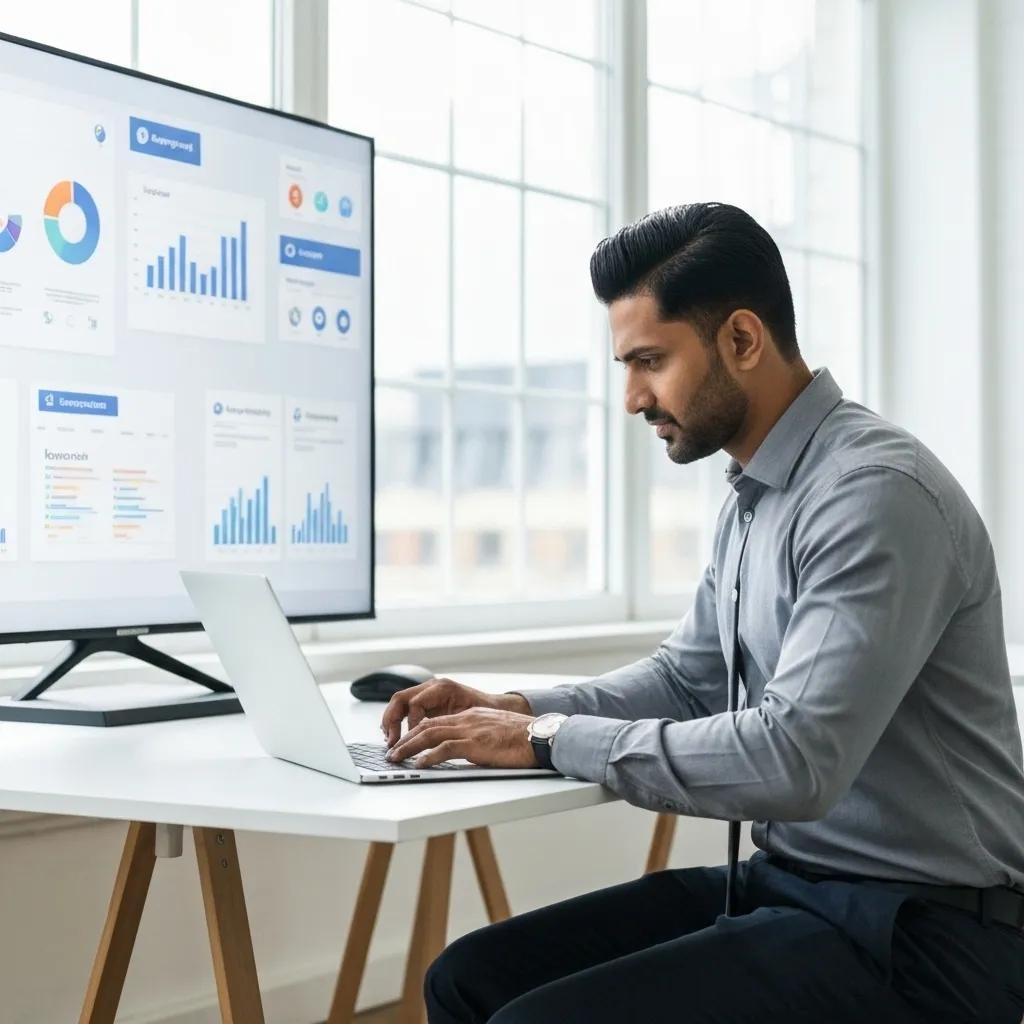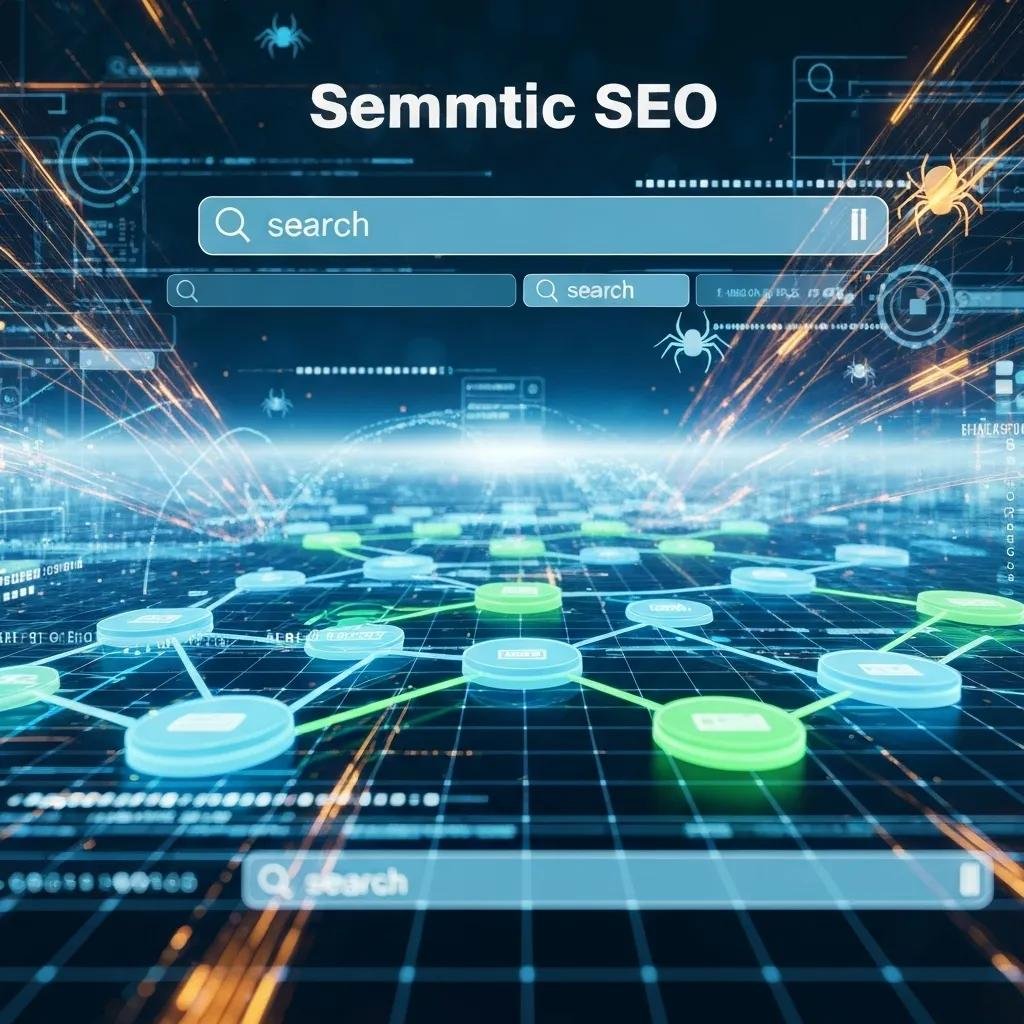
Off-Page SEO Strategies for High-Quality Backlinks in 2025
Building powerful backlinks through targeted off-page SEO strategies is essential for establishing domain authority and boosting search rankings in 2025. Whether you’re aiming to outrank competitors or strengthen trust signals for your website, mastering off-page SEO tactics delivers measurable growth and sustainable visibility. In this guide, you will discover foundational concepts, proven techniques, advanced analysis methods, semantic optimizations, local signals, performance measurement, and ethical link building strategies. Each section delivers definitions, mechanisms, and actionable benefits so you can implement these strategies immediately and adapt to evolving search algorithms.
What Are Off-Page SEO and Backlinks? Understanding Their Role in SEO Success
Off-page SEO encompasses actions taken outside your website to influence rankings, primarily through backlinks that signal authority and relevance. By earning links from authoritative domains, search engines interpret your site as a trusted resource, driving higher visibility and referral traffic. For example, a guest post on a high-authority industry blog can deliver targeted traffic and strengthen your backlink profile, setting the stage for advanced outreach tactics.
What Is Off-Page SEO and How Does It Differ from On-Page SEO?
Off-page SEO focuses on external factors like backlinks, co-mentions, and social signals, while on-page SEO addresses internal optimizations such as content, meta tags, and site structure. Off-page activities improve perceived trustworthiness and topical authority, whereas on-page elements ensure content relevance and crawlability. Understanding this distinction guides resource allocation for maximum ranking impact.
Why Are Backlinks Crucial for Google Rankings in 2025?
Backlinks remain a primary ranking factor because they act as endorsements from third-party websites, reinforcing expertise, experience, authoritativeness, and trustworthiness (E-E-A-T).
The 2025 Google Algorithm Ranking Factors
A study analyzing Google’s algorithm in Q1 2025 identified backlinks as a significant ranking factor, contributing 13% to the algorithm’s weight. Other crucial factors include consistent publication of satisfying content, niche expertise, and trustworthiness, all of which influence a site’s ability to attract valuable backlinks.
This research supports the article’s assertion that backlinks remain a primary ranking factor in 2025 and highlights other interconnected factors like content quality and trustworthiness.
High-quality links from relevant domains improve crawl frequency and algorithmic weighting. As semantic search evolves, contextual backlinks from topically aligned sources carry even greater weight, fueling your authority across related query networks.
How Does Quality vs. Quantity Impact Link Building?
Focusing on link quality means acquiring endorsements from authoritative, contextually relevant domains rather than accumulating numerous low-value links.
The Impact of Backlink Quality vs. Quantity on SEO
Research indicates that search engines, particularly Google, prioritize the quality of backlinks over their sheer quantity. High-quality backlinks from authoritative, relevant, and trustworthy sources are significantly more impactful for SEO rankings and brand credibility, while numerous low-quality links can lead to penalties.
This citation directly verifies the article’s emphasis on focusing on link quality rather than quantity for sustainable ranking gains and penalty avoidance.
One link from a high-authority site often outweighs dozens of links from weak or spammy sources. Prioritizing relevance, anchor-text diversity, and editorial placement ensures sustained ranking gains and reduces penalty risk, leading into strategic technique selection.
What Are the Most Effective Off-Page SEO Techniques for Acquiring Powerful Backlinks?

Targeted techniques deliver links that boost authority and referral traffic. By combining outreach, asset creation, and digital PR, you can attract natural links and establish brand credibility. Applying these methods consistently builds a resilient backlink profile.
How to Use Guest Posting and Contributor Opportunities for Link Building
Guest posting involves pitching valuable content to authoritative publications in your niche.
- Research target sites with domain authority above 30 and engaged audiences.
- Craft personalized pitches highlighting unique insights or data.
- Include contextual anchor text linking to relevant on-site resources.
- Follow editorial guidelines and deliver polished, audience-focused content.
This process fosters long-term relationships and positions your brand as an industry thought leader, smoothly transitioning to other link-building approaches.
What Is Broken Link Building and How Can You Execute It Successfully?
Broken link building uncovers dead resources on authoritative sites and offers your content as a replacement.
- Use tools like Check My Links to find 404 pages on target domains.
- Identify relevant broken pages that match your content topics.
- Reach out with a concise email explaining the broken link and suggesting your resource.
- Track outreach progress and follow up after one week.
By solving a publisher’s link issues, you earn high-value backlinks with minimal friction, providing a bridge to creating original linkable assets.
How to Create Linkable Assets That Attract High-Quality Backlinks
Producing exceptional resources encourages organic linking and widespread sharing. Consider developing:
- Infographics that visualize data insights.
- Original research reports with proprietary statistics.
- Interactive tools such as quizzes or calculators.
- Comprehensive guides that serve as cornerstone content.
For additional design ideas and best practices, explore the Fast SEO Services Blog – Insights and Strategies.
Creating these assets positions your site as a go-to reference, driving backlinks that fuel your off-page authority and preparing you for advanced analysis techniques.
How Does Digital PR and Media Outreach Enhance Off-Page SEO?
Digital PR leverages newsworthy stories and press releases to earn coverage and backlinks from high-authority media outlets. Tactics include:
- Responding to HARO inquiries with expert commentary.
- Building relationships with industry journalists for exclusive interviews.
- Crafting data-driven press releases that highlight trends.
- Collaborating with influencers to amplify campaigns.
By generating media signals and brand mentions, you amplify your backlink profile and strengthen your E-E-A-T credentials before exploring competitor research.
How Can Advanced Backlink Analysis and Competitor Research Improve Your Link Building Strategy?
Analyzing competitor links reveals opportunities to fill gaps and acquire similar or superior backlinks. This data-driven approach ensures targeted outreach and efficient resource allocation.
Which Tools Are Best for Backlink Profile and Competitor Analysis?
Below is a comparison of three leading backlink analysis platforms:
| Tool | Strength | Key Feature |
|---|---|---|
| Ahrefs | Extensive link database | Batch backlink checks |
| Semrush | Integrated SEO toolkit | Backlink Gap analysis |
| Moz | User-friendly interface | Domain Authority monitoring |
Each solution provides detailed link metrics and opportunity identification, enabling you to refine outreach strategies and transition into exploiting link gaps.
How to Identify and Exploit Link Gaps in Your Competitors’ Backlink Profiles
Link gap analysis highlights domains linking to competitors but not to you.
- Input competitor domains into your analysis tool.
- Filter for high-authority referring sites not linking to your domain.
- Prioritize targets based on relevance and traffic potential.
- Outreach with tailored content suggestions or resource replacements.
This strategic outreach fills critical gaps and accelerates your backlink acquisition, seamlessly leading to metrics evaluation.
What Metrics Define a High-Quality Backlink Profile?
High-quality backlink profiles feature:
- A diverse set of referring domains with domain authority above 30.
- Natural anchor-text diversity matching topical relevance.
- Links from industry-specific websites and publications.
- A balanced link velocity to avoid unnatural spikes.
Focusing on these metrics ensures sustainable growth and reduces penalty risk as you integrate semantic SEO enhancements.
How Does Semantic SEO Enhance Off-Page Authority and Backlink Relevance?

Semantic SEO leverages entity relationships and context to strengthen link signals, making your content more appealing to search engines and audiences alike. By mapping entities and leveraging co-citations, you amplify relevance and topical authority.
What Is Semantic SEO and Why Is It Important for Link Building?
Semantic SEO focuses on meaning, context, and entity relationships rather than isolated keywords. It ensures content aligns with searcher intent and knowledge graph topics, making your assets more link-worthy and authoritative. By structuring content around entities like “Off-Page SEO,” “Backlinks,” and “E-E-A-T,” you create stronger semantic signals that underpin link relevance.
How to Leverage Brand Mentions and Co-Citations for Off-Page SEO
Unlinked brand mentions and co-citations contribute to entity authority even without hyperlinks. To capitalize:
- Monitor brand mentions with tools like Google Alerts.
- Request attribution for unlinked mentions to convert them into backlinks.
- Encourage co-citations by collaborating with complementary industry authors.
These signals reinforce your entity relationships and produce natural citation flows, forming a bridge to structured data practices.
How Does Structured Data Support Off-Page SEO and Backlink Context?
Implementing structured data like or markup doesn’t directly create backlinks but enhances content visibility and eligibility for rich snippets, which drives more clicks and sharing.
Rich results demonstrate expertise and attract editorial links, strengthening the semantic context of your backlink profile and paving the way for local SEO integration.
What Role Does Local SEO Play in Off-Page SEO Strategies for Businesses?
Local SEO tactics create geographic relevance, driving local citations and reviews that complement broader off-page signals. Combining local and global strategies amplifies trust and authority across search contexts.
How to Optimize Google Business Profile and Local Citations for Link Authority
Optimizing local listings improves visibility in map packs and earns citation backlinks.
- Claim and verify your Google Business Profile with complete details.
- Ensure consistency of NAP (name, address, phone) across citation sites.
- Add high-resolution images and services descriptions.
- Encourage customers to leave detailed reviews.
These local signals integrate with your backlink profile and guide you to performance measurement.
How Do Reviews and Brand Mentions Influence Local Off-Page SEO?
Positive reviews and brand mentions on directories and social platforms signal trustworthiness to search engines. They also encourage local publications to reference your business, generating relevant backlinks.
Encouraging authentic feedback drives ongoing link acquisition and boosts your overall authority.
How Do You Measure and Monitor the Performance of Off-Page SEO Efforts?
Regular tracking of link acquisition, domain authority, and referral traffic ensures your off-page SEO remains effective and aligned with evolving goals. Establishing clear KPIs guides continuous improvement.
What Key Performance Indicators (KPIs) Track Backlink and Off-Page SEO Success?
Monitoring the right metrics helps evaluate strategy effectiveness:
- Referring Domains Count: Tracks diversity of linking sites.
- Domain Authority Score: Assesses overall link authority.
- Organic Traffic Growth: Measures ranking improvements.
- Backlink Growth Rate: Monitors acquisition velocity.
Focusing on these KPIs ensures you maintain a strong link profile and informs auditing cadence.
Which Tools Help Monitor Backlink Growth and Brand Mentions?
Effective monitoring relies on specialized platforms:
- Google Search Console for basic backlink reports.
- Ahrefs for comprehensive link tracking and site explorer.
- Semrush for brand mention alerts and backlink gap analysis.
These tools provide real-time insights into your profile, enabling timely strategy refinement before scheduling audits.
How Often Should You Audit Your Backlink Profile and Update Strategies?
Regular audits prevent toxic link accumulation and uncover new opportunities.
- Conduct a full backlink audit every 6–8 weeks.
- Review domain authority and remove harmful links quarterly.
- Refresh outreach campaigns every 3 months with updated assets.
Consistent auditing ensures your off-page SEO stays aligned with algorithm changes and growth objectives.
What Are White Hat Link Building Strategies to Ensure Sustainable SEO Growth in 2025?
White hat strategies focus on value-driven outreach and ethical practices that stand the test of time. By emphasizing quality and relevance, you build a resilient backlink portfolio that supports long-term rankings.
- Guest Posting on authoritative, niche-relevant sites.
- Content Marketing through high-value guides and research.
- Digital PR via press releases and HARO contributions.
- Influencer Collaborations that yield organic mentions.
These techniques generate genuine endorsements and align with search engine guidelines, minimizing penalty risk and preparing you to integrate broken link building ethically.
How Does Broken Link Building Fit into White Hat SEO Practices?
Broken link building adheres to white hat principles when you provide a genuinely valuable replacement resource rather than mass-emailing low-quality pages. It solves publisher problems and results in editorially placed, contextually relevant links that enhance user experience and trust.
How to Avoid Black Hat Link Building and Penalties?
Avoid tactics such as link farms, automated link exchanges, or hidden links. Instead, focus on transparent outreach, relevance, and value creation. Monitoring your backlink profile for unnatural spikes and disavowing harmful links preserves your site’s integrity and ongoing ranking performance.
Building a robust off-page SEO strategy requires continuous adaptation and dedication. By combining foundational link-building tactics, advanced competitor insights, semantic SEO enhancements, local signals, and rigorous performance monitoring, you establish a backlink profile that drives lasting authority, traffic, and growth. Implement these methods consistently, refine based on data, and maintain ethical practices to secure your rankings in 2025 and beyond.
Research Support
Google EEAT: What It Is & Why It Matters in 2025?
Google’s E-E-A-T (Experience, Expertise, Authoritativeness, and Trustworthiness) framework is a key quality indicator that helps filter unreliable content. Backlinks from trusted websites are crucial for strengthening a site’s E-E-A-T, signaling to Google that the content is valuable and trustworthy, thereby improving rankings.
This research reinforces the article’s point that backlinks are vital for reinforcing E-E-A-T, which is increasingly important for Google rankings in 2025.
